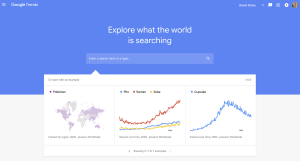Are you finding it challenging to create persuasive ad copy that delivers results? You’re not alone. Developing effective ad copy takes time and practice to master. However, with the right techniques, you can boost your conversions and see a significant increase in click-through rates, leads, and sales. Whether you’re a seasoned marketer or just starting, the steps in this article will provide you with the insights and tools you need to create ad copy that resonates and converts.
Understanding Your Audience
Defining Customer Personas for Better Conversions
Creating customer personas is the first step towards tailoring your ad copy for better conversions. A detailed customer persona includes demographics, interests, pain points, and buying behaviors. By understanding your ideal customer, you can write ad copy that speaks directly to them, making it more persuasive and impactful. Crafting these personas involves gathering data from existing customers and market research to predict potential customer behaviors and preferences. This foundational work ensures your advertising copy resonates personally with your target audience, increasing the likelihood of conversion.
Effective ad copy addresses the reader’s pain points and offers a solution. Using personas, your ad copy can highlight how your product or service solves a specific problem, making your message more relevant and compelling. The dedicated precision in targeting guarantees that your ad spend is focused on prospects most likely to convert into overnight clients.
Transitioning smoothly into how we can further identify these customer needs, let’s delve into the role of Google Trends in fine-tuning our understanding of our potential customers.
Identifying Customer Needs with Google Trends
Google Trends is a powerful tool for identifying emerging trends and interests among your target audience. You can see how interest levels have changed over time and across different regions by typing in keywords related to your business. This insight allows you to adjust your ad copy to align with what your potential customers are currently interested in or actively searching for. For instance, if there’s a rising trend around eco-friendly products, an eco-friendly brand can leverage this interest by emphasizing sustainability in its ad copy to boost ad copy conversions.
Moreover, Google Trends can help you take advantage of seasonal fluctuations in interest, enabling more timely and relevant ad campaigns. For example, a swimwear brand can ramp up advertising efforts in the months leading up to summer, using language that resonates with the anticipation and excitement of the coming season. This strategic use of trending information ensures your ad copy remains fresh and engaging to your target audience.
Having identified customer needs through Google Trends, let’s look at how Google Analytics plays a crucial role in understanding and segmenting your target audience for optimized ad campaigns.
The Role of Google Analytics in Understanding Your Target Audience
Google Analytics is an invaluable asset for analyzing the behavior of your website visitors and refining your customer personas. It provides detailed insights into user demographics, interests, and how they interact with your site. By examining metrics such as bounce rate, time on site, and conversion paths, you can uncover the effectiveness of your existing ad copy and identify areas for improvement to align more closely with your target audience’s preferences.
The platform also enables segmentation of your audience based on their behavior, which can be used to create more targeted advertising campaigns on social media platforms and Google Ads. For example, you could target users who visited your site but didn’t make a purchase with retargeting ads containing a special offer, directly addressing a possible pain point of price sensitivity. With a refined understanding of our audience, we are now better equipped to explore the power of Google Ads in enhancing our advertising efforts.
Exploring the Power of Google Ads
Why Choose Google Ads for Your Campaign
Google Ads stands out as an incredibly effective platform for driving targeted traffic to your landing page, thanks to its vast reach and advanced targeting options. You can display your ad copy at the top of Google search results or on relevant websites within the Google Display Network. The platform guarantees that your message is seen by potential customers at the crucial moment when they are searching for solutions your business offers.
This immediacy and relevance can lead to significantly higher conversion rates. Additionally, Google Ads offers a pay-per-click (PPC) model, meaning you only pay when someone clicks on your ad, providing a cost-effective way to drive targeted traffic. The platform also offers detailed performance analytics, enabling you to track the success of your ad campaigns in real-time and make data-driven decisions.

Did you know that Propellant Media is a Google Premier Partner? This means we have met Google’s highest standards and are recognized as one of the top 3% of marketing agencies globally. As a Premier Partner, we have access to exclusive training and support from Google, giving us the knowledge and tools to help you achieve maximum results with your Google Ads campaigns. If you’re looking to work with experts in Google Ads, look no further than Propellant Media.
Moving forward, let’s dive into some advanced ad copy techniques that can further improve our click-through rates on Google Ads.
Advanced Ad Copy Techniques for Improved Click-Through Rate
Improving click-through rates (CTR) on Google Ads requires a mix of creativity and strategic structuring. One effective technique is to incorporate a strong call-to-action (CTA) that tells users exactly what action you want them to take, such as “Shop Now” or “Sign Up for Free Video Training”. Another powerful strategy is to use numbers or statistics in your headlines to grab attention and set expectations, like “Increase Sales by 20% with Our Tool”.
Incorporating emotional triggers and persuasive language can also drive higher CTRs. Words that evoke curiosity, urgency, or exclusivity can compel users to click through to find out more. Additionally, aligning your ad copy with the corresponding landing page ensures consistency in messaging, which builds trust with your audience and can lead to higher conversion rates.
To further maximize the impact of your Google Ads campaigns, let’s explore how the use of Google Ads’ Quality Score can lead to better conversions.
Using Google Ads Quality Score for Better Conversions
The Quality Score in Google Ads is a critical metric that reflects the relevance and quality of your ad copy, keywords, and landing pages. A higher Quality Score means your ads are more relevant to user queries, which can result in lower costs and better ad positioning. To improve your Quality Score, focus on refining your ad copy to ensure it aligns closely with your target keywords and addresses the specific needs of your target audience.
Regularly testing and optimizing your landing pages for load speed, content relevance, and user experience is also crucial. These actions boost your Quality Score and directly contribute to a higher conversion rate by providing a seamless and satisfying experience for users who click through your ads.
By utilizing Google Analytics, mastering advanced ad copy techniques, and optimizing the Quality Score, advertisers can significantly boost their conversions and achieve greater success in their digital advertising endeavors.
Writing Persuasive Ad Copy with SEO in Mind

Creating persuasive ad copy is an art that, when combined with the science of Search Engine Optimization (SEO), can dramatically boost your ad copy conversions. The key is to not only captivate your target audience but also to ensure your ad copy reads well for search engines. By integrating popular Google search terms into your ad copy, you increase the visibility and effectiveness of your ads. This strategy applies across various platforms, whether you’re crafting Google Ads or Facebook Ads.
Great ad copy goes beyond just selling a product; it connects with someone personally, addresses potential customers’ pain points, and offers a solution. Incorporate social proof or a success story into your ad to add credibility and engage your audience more compellingly. The body section of your ad should succinctly convey the value proposition, making every word count towards persuading the reader.
Moving from capturing attention to converting interest into action, a great headline and a clear call-to-action (CTA) button are indispensable. These elements guide users toward the next steps, whether it’s signing up for free video training, downloading a swipe file, or becoming overnight clients. Balancing creativity with SEO through keyword optimization ensures that your ad not only attracts but also converts.
Keyword Optimization: Importance of Incorporating Popular Google Search Terms
- Researching and integrating high-volume Google search terms into your ad copy ensures your message reaches the largest possible audience.
- Keyword optimization isn’t just for SEO; it’s vital for pay-per-click (PPC) campaigns, where relevance can significantly affect the cost and effectiveness of your ads.
- Tools like Google Keyword Planner can help identify keywords that align with your product or service, offering insights into seasonal trends, competition, and more.
Implementing a strategic approach to keyword optimization involves understanding the balance between broad and specific terms. While broad terms may attract more searches, specific terms tend to attract more qualified traffic likely to convert. This balance is key in writing effective ad copy that maximizes your conversion rate.
Harnessing the Power of Google’s “Answer Box” in Your Ad Copy
To maximize the impact of your ad copy, aim to answer questions your target audience is likely asking. Google’s “Answer Box” is an excellent indication of high-priority content for your potential customers. By framing your ad copy to address these queries, you provide value upfront and increase the chance of your ad being the top-selected answer.
This approach requires careful research and an understanding of the purpose behind search queries. Crafting ad copy that meets these criteria can amplify your reach, confirming that your message appears prominently, even in organic search results. Thus, direct answers combined with persuasive advertising copy can dramatically increase ad efficacy.
Building Superior Landing Pages with Google Sites
A well-constructed landing page is the cornerstone of effective ad copy conversions. Using Google Sites to build your landing page allows seamless integration with other Google tools, such as Google Analytics for tracking and Google Ads for driving traffic. This synergy ensures a cohesive campaign that aligns ad copy with landing page content, maximizing conversions.
Your landing page should mirror the promises made in your ad copy, delivering on expectations and providing a clear path to conversion. This includes optimizing the page for mobile users, fast loading times, and clear, compelling copy that reiterates the ad’s main benefits.
Integrate clear, actionable calls-to-action throughout your landing page to guide users toward making a decision. Whether subscribing to a newsletter, registering for a webinar, or making a purchase, the CTA should be straightforward and visually distinct to maximize conversion rates.
Tracking Performance and Optimizing Your Ads
Once your ad campaign is live, the work is NOT over. Tracking performance through tools like Google Analytics is critical in understanding how users interact with your ads and landing pages. This data enables continuous optimization, guaranteeing that you reach your target audience and effectively engage with them. Performance metrics like click-through rates (CTR), conversion rates, and bounce rates provide valuable insights into user behavior. These metrics can pinpoint areas for enhancement, whether it involves adjusting ad copy, refining targeting strategies, or enhancing the design and functionality of landing pages.
In addition, Google Analytics provides a comprehensive view of how your ads convert traffic into desired actions. Setting up conversion tracking involves defining what constitutes a conversion for your campaign, whether it’s a sale, signup, download, or other actions. This granularity allows for precise measurement of ad success and ROI. With this data, advertisers can identify which elements of their campaigns are most effective and which need adjustment. For instance, if certain ad copy leads to higher conversion rates, similar themes or phrases can be replicated in other campaigns. Conversely, underperforming ads can be paused or revised for better results.
Using Google Ads Experiments for A/B Testing
Split testing, or A/B testing, is an invaluable method for optimizing ad campaigns. Google Ads Experiments allow advertisers to make changes to their ads, targeting, and more to see what works best. This could involve testing different ad copy, landing page layouts, or CTA buttons to determine what maximizes conversion rate.
This methodical approach to testing ensures that decisions are data-driven. By comparing the performance of the experimental ad against the original, advertisers can make informed decisions about what changes to implement across their campaigns. This continuous improvement cycle is essential for maintaining and increasing ad campaign effectiveness.
The Impact of Google My Business on Ad Performance
For local businesses, integrating Google My Business into ad campaigns can significantly influence ad performance. This tool allows businesses to manage their online presence across Google, including search and maps, thereby enhancing local search visibility.
When ensuring that business information is accurate and comprehensive, advertisers can improve their relevance in local searches. Positive reviews and updated business information can furthermore boost ad copy conversions by providing social proof and increasing trust in your business.
In sum, combining persuasive ad copy with strategic SEO, meticulous keyword optimization, and the power of Google’s vast array of tools forms a solid foundation for any successful digital advertising campaign. From crafting the perfect message to meticulously tracking and optimizing performance, each step is critical in turning potential customers into loyal clients.
Utilizing Google Keyword Planner for Effective Keyword Selection
Success in Google Ads often starts with choosing the right keywords, and Google Keyword Planner is an invaluable tool in this process. By helping advertisers find relevant keywords, this tool ensures your Google ad copy aligns with what your target audience is searching for. For instance, if you’re offering ‘free online marketing courses’, Google Keyword Planner can show you related terms that potential customers use, like ‘digital marketing training’.
When using Keyword Planner, it’s crucial to focus on keywords with high search volume but moderate competition, ensuring your ad reaches as many eyes as possible without getting lost in a sea of similar ads. Also, incorporating these keywords into your ad copy and landing page content boosts your nr, leading to lower costs per click and better ad placements.
This strategic use of Google Keyword Planner can be a game-changer for your ad campaigns, making sure your message reaches the right people at the right time. Incorporating this tool effectively into your strategy is a step towards crafting ad copy that speaks directly to the needs and desires of your audience, increasing the likelihood of conversion.
How Google Display Network Amplifies Your Reach
Google Display Network (GDN) extends the reach of your ads beyond Google Search to hundreds of other websites, apps, and videos where your target audience might spend their time. This significantly broadens your scope, allowing you to catch potential customers’ attention in various contexts, from reading news articles to watching a YouTube video.
For example, creating a display ad campaign that targets specific interests or demographics can position your ad on websites frequently visited by your potential customers, making your campaigns more relevant and engaging.The GDN excels at building brand awareness and keeping your offerings top-of-mind for when the buying decision occurs. Utilizing display ad copy that resonates with viewer interests paired with captivating visuals can lead to impressive conversion rates.
Moreover, a compelling success story from using GDN involved a retailer who saw an exponential increase in site visits by targeting related product and lifestyle websites. The key to their success was tailored display ad copy that spoke to the viewer’s aspirations and pain points, making it irresistible to click through. This showcases how Google Display Network can amplify your reach and significantly impact your ad campaign’s success through strategic targeting and great ad copy.
Conclusion
In conclusion, enhancing your ad copy is crucial for supercharging your conversions. By focusing on clarity, engaging language, and a deep understanding of your target audience, you can create compelling ads that resonate and drive results. Remember, great ad copy is not just about selling a product, it’s about telling a story that connects with potential customers on a personal level.
Ready to take your advertising to the next level? Reach out to Propellant Media today, and let our team of experts help you craft ad copy that truly converts!
Marketing Problem? Let Us Solve It

